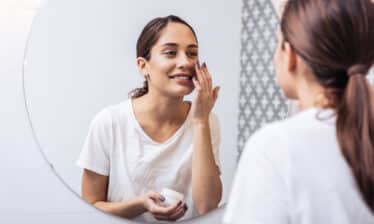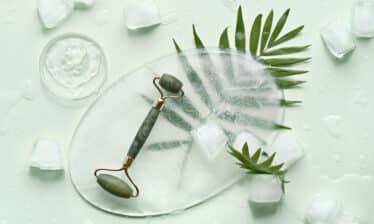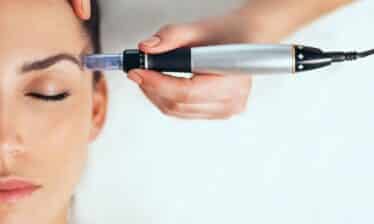Menopause is an inevitable part of life. The changes in hormone levels associated with menopause can cause expected and unexpected changes in your mood, emotions, and body. One area that can be significantly affected by menopause is the skin. You may experience menopause-related skin changes such as dryness, loss of volume, and even acne.
Taking care of your skin during menopause can’t reverse all the changes. But a good skincare routine for menopause can make your skin look and feel better.
What Happens to the Skin During Menopause
Menopause is defined as 12 months without a menstrual period. Before reaching that point, most people experience perimenopause. At this stage, which can last for several years, the production of hormones estrogen and progesterone significantly fluctuates or drops.1
Hormone fluctuations can cause irregular periods, hot flashes, and mood and skin changes. Some people can experience new acne breakouts during perimenopause.2
Reduced estrogen and progesterone can also contribute to the loss of collagen under the skin. The skin looks less plump as collagen production decreases, and wrinkles may be more apparent. The loss of volume can also increase skin sagging.3
In addition, lower estrogen levels may increase skin dryness and lead to other issues, such as:4
- Impaired skin barrier function
- Reduced sebum production
- Slower wound healing
Skincare for Menopause
As your skin changes, you may need to change your skincare routine. Skin becomes more delicate during and after menopause, so it’s important to plan your menopause skincare to take care of your face and body properly.
- Gentle cleansers: Use gentle cleansers instead of soap or drying body washes. If you have breakouts, look for a cleanser with salicylic acid. This will clear pore-clogging oil and debris without being too drying.5
- Moisturizers: Moisturizer is the best product to use to combat menopause-related dryness. You may want to apply hand and body lotion multiple times per day, including right after your shower. A rich facial moisturizer with ceramides can improve your skin’s moisture barrier and prevent moisture loss.6 Adding a facial oil can seal in moisture and add more skin hydration.
- Sun protection: Sun protection is important at any age, but your risk of skin cancer rises as you get older. Using a broad-spectrum SPF can help prevent sun damage and reduce the risk of skin cancer. See your dermatologist for annual skin checks to identify any pre-cancerous lesions before they become a problem.7
If menopause symptoms, including skin changes, are a significant issue, you can talk to your doctor about hormone replacement therapy. This can reduce the effects of menopause and slow changes to the skin. If your skin’s appearance is a concern, you can visit a dermatologist or esthetician to talk about treatments. Injectables such as Botox or fillers can reduce the appearance of wrinkles, and laser treatments can minimize age-related discolorations. Facials can soothe skin and provide extra moisturizing.
To learn more about skincare at all phases of life, check out My Skincare Routine. We have professional skincare tips, valuable product information, and more.
SOURCES:
- Healthline: “Understanding How Your Skin Changes During Menopause.“
- Healthline: “Understanding How Your Skin Changes During Menopause.“
- Healthline: “Understanding How Your Skin Changes During Menopause.“
- Northwestern Medicine: “Menopause and Your Skin.“
- American Academy of Dermatology Association: “Caring for Your Skin in Menopause.“
- American Academy of Dermatology Association: “Caring for Your Skin in Menopause.“
- American Academy of Dermatology Association: “Caring for Your Skin in Menopause.“






